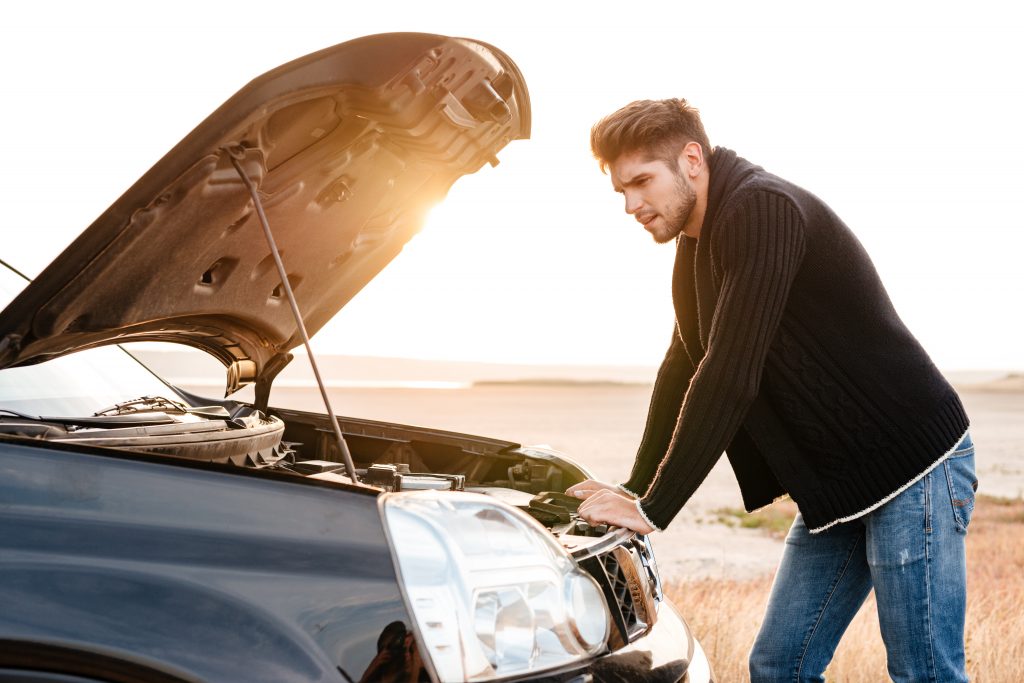Those indicators may mean expensive damage has occurred, or is about to.
How Coolant Works
Engine coolant is a 50-50 mix of water and liquid antifreeze – meant to keep the coolant from freezing in bitter cold. It’s pumped throughout the hot engine first and then through the radiator, where fresh air cools it down. That allows the coolant to draw heat from the engine again on its next lap around the system.
The cooling system is a closed loop that operates under pressure, and any leaks or pressure loss can lead to trouble – and too much heat.
Overheating will usually trigger a dashboard warning light and, on vehicles that have a temperature gauge, send the needle into the danger zone, indicated by the color red and an “H” for Hot. If that happens, or steam is coming from under the hood, pull off the road as soon as it’s safe to do so and investigate.
Easily Keep Track of Your Maintenance With the Carfax Car Care app
Why Is My Car Overheating?
There are several reasons that your car may overheat:
- Low coolant level: If you haven’t checked the level in the overflow tank for a long time, maybe there isn’t enough coolant to keep the engine at the right temperature. Adding coolant could solve the problem, but you need to search for leaks or other problems.
- Coolant leak: It may be dripping out of the radiator, a hose, the coolant overflow tank, the heater core, engine block or a cylinder head gasket. A leak is usually obvious to detect because you’ll see coolant on the ground where the car was parked, or on the engine. Leaks can’t fix themselves, so repairs or new parts will be necessary, and soon.
- A defective or loose radiator cap: Without a tightly closed cap, the cooling system won’t stay pressurized; that will lower the boiling point of the coolant and can cause overheating. Before replacing a radiator cap, have it tested to see if it can still hold pressure.
- Broken water pump or belt: The water pump, which circulates coolant, may have failed, or the belt that drives the pump may have broken or become loose. A broken pump often results in a leak or seepage.
- Bad thermostat: Coolant may not be circulating through the radiator and engine because the thermostat is stuck in the “closed” position.
- Engine fan not working: When you’re moving fast on the highway, the airflow is usually enough to cool your radiator. However, when you’re not moving as quickly and it’s hot outside (such as in stop-go driving on a hot day), you need the engine fan to draw outside air through the radiator. Possible causes of a broken engine fan include a defective motor or switch. On older vehicles that have a belt-driven fan, the belt might be broken.
- Clogged radiator: Dirt, debris or corrosion from old coolant may be restricting the coolant Clogged radiators usually can be cleaned, but excessive corrosion may mean you will need a new radiator.
- Clogged exhaust system: The catalytic converter or another part may have become blocked or restricted, so exhaust gas can’t escape like it’s supposed to.
- Overloading the cooling system: Carrying or towing too much weight can overheat the engine. (Think hitching an 8,000-pound trailer to a vehicle designed to tow 5,000 pounds.) Towing too much weight will also overheat the transmission and place excessive burden on the brakes.






